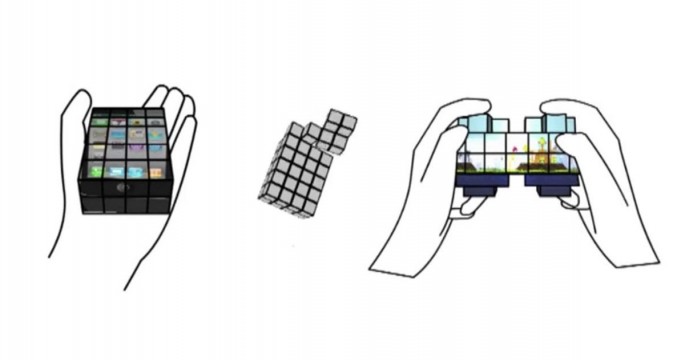Google's Project Ara and other companies are still developing modular smartphones, but a group of researchers has just designed a touchscreen built from six-sided display cubes that form daisy chain links. The modular cubes developed by British researchers can be moved like the pieces of a Rubik's Cube puzzle
Cubimorph's chain of cubes could be repositioned into blocks that form any shape. This could allow touch screens to cover the entire mobile device.
The research team from the University of Bristol has proposed a device that would allow a flat smartphone to be folded into a game controller-shaped device, according to Engadget. In addition, the phone could be rolled up into a rectangular log with a small display on one end.
An algorithm can also be used to fold up the phone like an origami piece. It will figure out the best way to fold and twist the screen into a certain shape. This would help to avoid awkward shapes and ones that trap the user's fingers.
The Cubimorph was developed by Dr. Anne Roudaut from the University of Bristol's Computer Science department. It was created with the help of United Kingdom and United States researchers including at Purdue University in Indiana.
The new display screen is still a prototype. However, this week the researchers will present the concept to a panel at the International Conference on Robotics and Automation in Stockholm.
In related news, researchers are working on transparent displays using the tech like on Tony Stark's smartphone in the Iron Man movies. The ones being developed today are much larger. However, within a decade they could have more functionality than the superhero's mobile device.
Jennifer Davis is vice president of marketing and product strategy at Planar. She explains that transparent screens make what is happening on the front of the screen appear on the back of the screen, according to Inverse.
Future consumers would likely want large transparent screens. Such displays could be used for several applications such as displays at retail stores or museums, or way-finding kiosks.
Meanwhile, Davis points out that people often use smartphones for functions such as private texts or email. Thus, they probably would not want transparent screen tech on mobile devices to publically share funny cat videos.



























